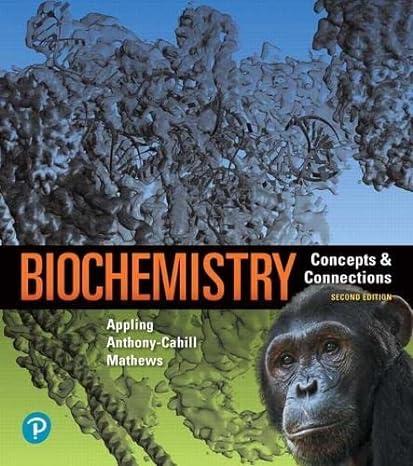Pancreatic b cells secrete insulin in response to increased blood glucose. This process requires the catabolism of
Question:
Pancreatic b cells secrete insulin in response to increased blood glucose. This process requires the catabolism of glucose to pyruvate via glycolysis, producing ATP. which initiates the exocytosis of insulin as described in Section 17.2. However, it is known that mitochondrial pyruvate metabolism is also critical for glucose-stimulated insulin secretion from pancreatic β cells. Ferdaoussi et al. in J. Clin. Invest. 125, 3847–3860 (2015) investigated a pathway that amplifies glucose-stimulated insulin secretion. In these studies, they infused b cells with various metabolites and measured the exocytosis response. You will need to recall the various routes by which pyruvate can be metabolized in mitochondria to address this problem.
(a) Panels b, c, and d show the effects of treatment with the citric acid cycle intermediates isocitrate and a-ketoglutarate (a-KG). Describe the effect (amplify, inhibit, no effect) of each of these metabolites on glucose-stimulated exocytosis.
(b) Panels e and f show the effects of treatment with either NADPH (in either a 1:10 or a 10:1 molar ratio with NADP+), or NADH (in a 10:1 molar ratio with NAD+). Describe the effect (amplify, inhibit, no effect) of each of these treatments on glucose-stimulated exocytosis.
(c) In other experiments not shown here, the authors discovered that cytosolic isocitrate dehydrogenase is required for amplification of the glucose-stimulated exocytosis. Based on your analysis of the data, explain the role of cytosolic isocitrate dehydrogenase in this pathway.
(d) The authors also observed that glucose stimulation causes an increase in reduced glutathione (GSH) and that this increase was dependent on the activity of cytosolic isocitrate dehydrogenase. They then showed that GSH amplifies the glucose-stimulated exocytosis from β cells (panel g). Propose a metabolic pathway that connects all of these results, starting with pyruvate and ending with GSH.
Step by Step Answer:

Biochemistry Concepts And Connections
ISBN: 9780134641621
2nd Edition
Authors: Dean Appling, Spencer Anthony-Cahill, Christopher Mathews





